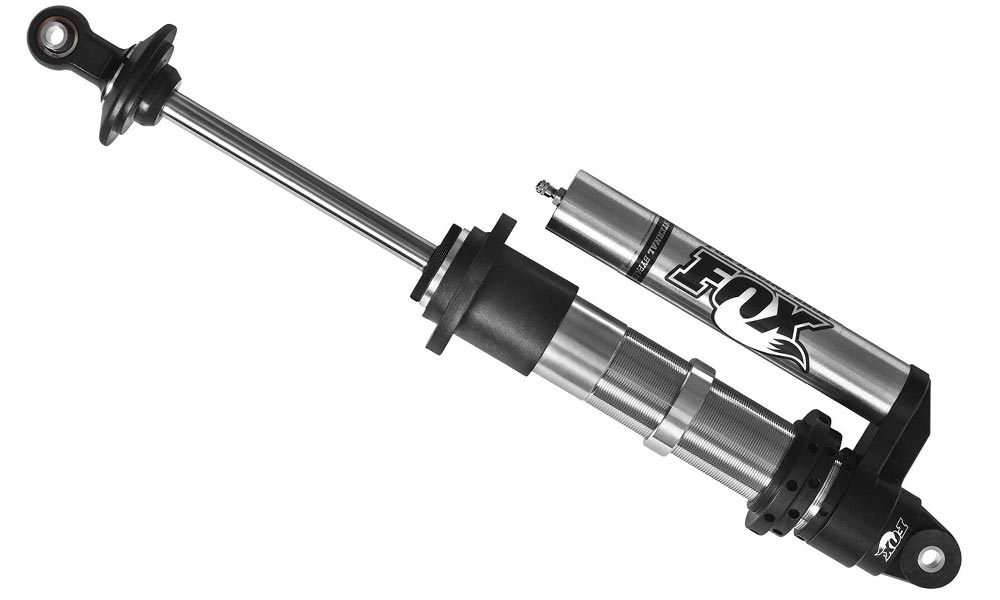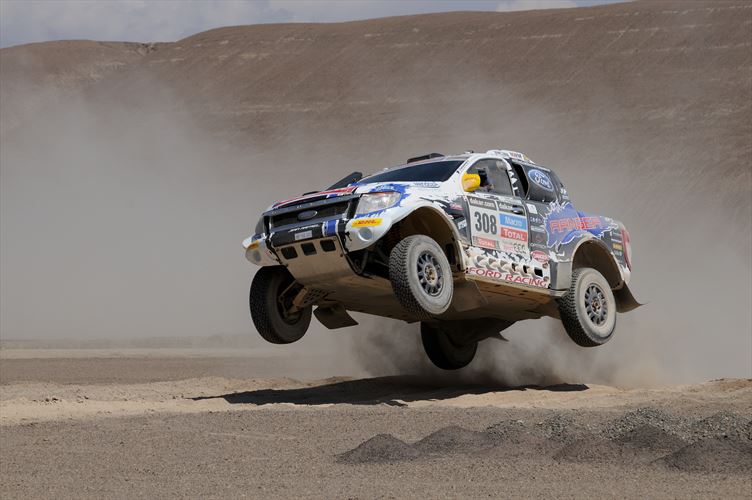Well, that’s a shock
Regardless of the suspension set-up of your vehicle, it’ll have shock absorbers. But what exactly do they do? And why are some so ridiculously expensive? A shock is a shock is a shock, right? Wrong!
The basic function of a shock absorber is quite obvious, right? The job of a shock absorber is to absorb shocks. Well, yes, that’s true, but it’s a bit more complicated than that… In essence, a shock absorber is a hydraulic (oil) pump. It absorbs shocks from the road, which would otherwise result in a teeth-shattering ride, and it helps keep your tyres in contact with the road at all times. This is done with the help of hydraulic fluid inside the shock that takes kinetic energy and turns it into thermal energy, which can then be dissipated. But how does this work in practice? Each shock absorber consists of a piston (attached to a piston rod) that works against the fluid inside the shock. As the shock travels up and down (because of changes in the road), the piston pushes the hydraulic fluid through small holes. Since these holes are so small, a limited amount of fluid can be pushed through at any given moment, which ultimately slows down the movement of the shock. The worse the condition of the road, the faster the shock needs to work, and the more strain will be placed on it.
 Your typical twin-tube shock consists of a working tube and a reservoir tube.
Your typical twin-tube shock consists of a working tube and a reservoir tube.
1. Twin-tube shocks
The oldest and most basic design is the twin-tube. Shock absorbers have evolved massively since the original creation of the twin-tube, but you can still find a basic twin-tube if you shop at the very affordable end of the market. As its name suggests, it consists of two tubes, one nested inside the other. The inner tube is called the working tube, and houses the piston that does the work. The outer tube is called the reserve tube, and acts as a reservoir for the hydraulic fluid.
2. Gas-charged twin-tube shocks
The problem with a basic shock absorber like the twin-tube described above is that it quickly starts to suffer from something called cavitation when in operation. It’s a fancy word, but all it means is that bubbles start to form in the hydraulic fluid. It’s the same thing that happens when you shake a bottle of water. The problem, though, is that this air reduces the effectiveness of the shock. To solve this, a lot of modern shocks are now gas charged. A gas shock isn’t filled with gas (as some people assume), but rather charged with gas to keep the hydraulic fluid under pressure, thus reducing cavitation. Importantly, though, cavitation can still take place, since this is a low-pressure system that doesn’t separate the gas and the fluid.
3. PSD shocks
PSD (or position sensitive damping) shocks are a further evolution of the twin-tube design. In addition to gas, these shocks have grooves inside the working tube that allow for easier movement in the middle range of movement, which results in greater comfort (for this reason, the grooved area is called the ‘comfort zone’). When the road gets bad, however, and the shock starts to travel outside the grooved zone, movement becomes more restrained, which results in a less floaty ride and more control for the driver.
4. ASD shocks
Comfort versus control is a battle that vehicle designers are forced to face, and this is especially prevalent when it comes to a vehicle’s suspension. There is a reason sports cars have such stiff suspension; it results in less roll and more control. PSD shocks go some way towards offering a good balance between comfort on good roads and control on bad ones, but engineers always need to decide how far to push things in any one direction. A fancier (and more expensive solution is an acceleration sensitive damping (ASD) shock, which has an acceleration-sensitive valve that connects the working tube to the reservoir.
When the shock experiences acceleration beyond a specified point, this valve acts as a bypass. Without going into too much detail, the ASD shock can be described as having the ability to adapt to a bump or pothole almost instantly. The shock operates just like a normal twin-tube damper, until rapid acceleration in movement occurs and the bypass valve is activated, and different damping parameters kick in. So this valve can provide good performance in extreme conditions, without impact on ordinary day-to-day performance.
 A monotube shock consists of a single tube that has a gas charge at one end.
A monotube shock consists of a single tube that has a gas charge at one end.
5. Monotube shocks
A monotube shock is different from a twin-tube one in that it consists of only one tube. There is no nested system with a working tube and a reservoir. Instead, you have a single tube. So, what’s the point? Well, because there is only one tube, the size of the piston can be much bigger and more robust. A monotube is also different in that it has two chambers, one that houses the fluid, and one that houses the gas.
This means that it operates at a higher pressure, which lets it better fight cavitation, and the single tube (which is exposed to the air) also allows it to dissipate heat quicker. Overall, this system provides a more controlled and predictable ride, and most people say that fitting monotube shocks has a huge impact on the performance of your car. But they are more expensive, so you’ll have to pay for that performance.
 High-performance shocks like this Fox Racing one are expensive but incredibly competent. They are usually fully adjustable and have a reservoir that is separated from the main shock.
High-performance shocks like this Fox Racing one are expensive but incredibly competent. They are usually fully adjustable and have a reservoir that is separated from the main shock.
6. High-performance shocks
Most of us will settle for twin-tube shocks, and a lucky few will splurge on monotube ones. But this is only the tip of the iceberg. Shocks are available in a multitude of configurations. Many of the truly fancy ones barely resemble typical shocks. Racing and off-road shocks, like those offered by Fox and Bilstein, often have reservoirs that are completely separated from the rest of the shock with gas chambers that can be adjusted on the fly. They can also be fitted in all sorts of ways (unlike regular shocks which are fitted upright), a particularly popular option being a coil-over configuration that allows the shock to be fitted inside the coil. It’s popular in racing cars because it’s an efficient, yet compact, design. As with any high-performance part, these kinds of shocks can cost a fortune. But just have a look at a WRC or Dakar vehicle barrelling at top speed over horrendous terrain and you’ll understand why a set can cost hundreds of thousands.
Text: GG van Rooyen







